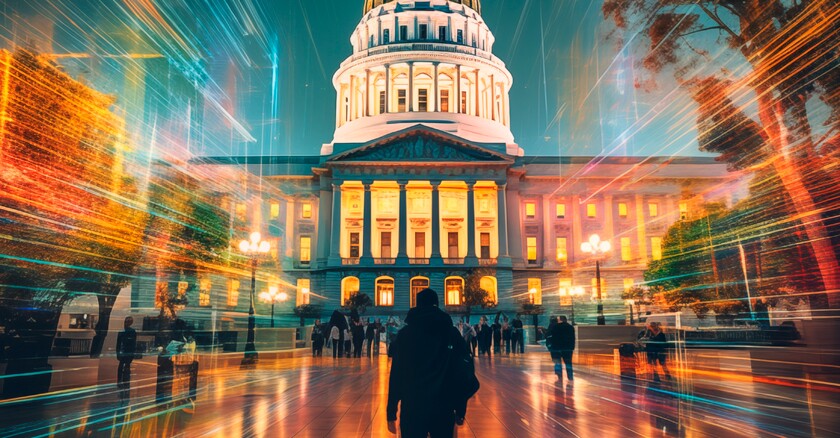The marketing push tends to brush over the fact that AI still has a long way to go, both in capabilities and earning the trust of officials and constituents.
That caveat aside, artificial intelligence made solid strides in government technology during the last 12 months, progress that points to where the well-funded and well-promoted tool is headed in 2024. It’s difficult these days to find a CIO or other government tech leader dismissive of the potential and influence of AI.
“I believe that generative AI is going to be completely transformative for government as well as for society,” Utah CIO Alan Fuller said at the NASCIO Midyear Conference in May. “I think it’s as big as the Internet; I think it’s going to change lots of things.”
Indeed, much — if not most — of what artificial intelligence did in state and local governments this past year revolves around generative AI.
As is likely common knowledge by now, that particular tech spots patterns in the data used to train AI software and then automatically provides words and images based on those lessons.
Among the lowest-hanging fruit for AI in government involves press releases and other forms of communication from agencies to residents. Zencity, for example, debuted a ChatGPT tool that writes what amounts to a first draft of a press release — including potential quotes from public officials. That could save significant time for city managers, among other advantages, according to the company.
Municipal budgeting, too, could serve as fertile ground for generative AI.
A new AI tool from ClearGov takes in past budgeting data and future estimates to produce what officials sometimes call a budget narrative. Such narratives, which put spending figures into context, often help those officials sell the budget to peers and voters. AI could bring more efficiency to the process, usually the most difficult and contentious work undertaken by local and state governments.
Generative AI also gained more of a presence in higher education in 2023. The technology can help with essays, math problems and lesson plans, with work completed within seconds. But fears of plagiarism and other abuses have led to a more cautious welcome for AI in universities and colleges than in city halls, with large school districts such as the one in New York City initially placing restrictions on ChatGPT.
College deans and local school boards continue to grapple with the full implications of AI. So are other governmental bodies as the technology hogged more of the spotlight as 2023 progressed. Maine imposed a six-month ban on the use of AI for state employees using state devices or conducting state business. Officials said they needed time to study the privacy, bias and misinformation concerns sparked by ongoing deployment of AI-based products. Executive orders started to emerge at a regular clip as fall rolled around, with Pennsylvania, Virginia, Oklahoma and New Jersey governors all issuing guidance within a few weeks of each other. Their missives were followed within weeks by an AI Executive Order from the White House in late October. Each official action recognized both the potential and the risk, with many calling for outside help to develop appropriate policies for safe use in service of their residents.
It’s almost impossible, however, to imagine a gov tech future without much more artificial intelligence. Evidence for that comes from every corner of the industry.
For instance, industry giant Tyler Technologies touted its growing ability to use AI for quicker and more accurate court filings, whose complex coding and redaction requirements often force judicial employees to perform manual data entry. Klir’s new AI-backed offering is designed to improve water management and compliance, with what the company calls “holistic” views of utility systems delivered via a chatbot fueled by artificial intelligence.
Startups, of course, have also embraced AI, as shown by the most recent cohort from CivStart’s gov tech accelerator program, which provides at least some foreshadowing of the tools public agencies might be using a few years from now. One of the program participants is using artificial intelligence to help local officials — many of them new to the grunt work of government — write and manage legislation.
Click here to read the rest of our 2023 Year in Review coverage.
This story originally appeared in the December issue of Government Technology magazine. Click here to view the full digital edition online.















